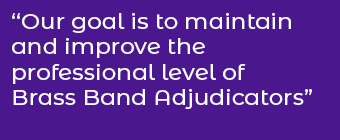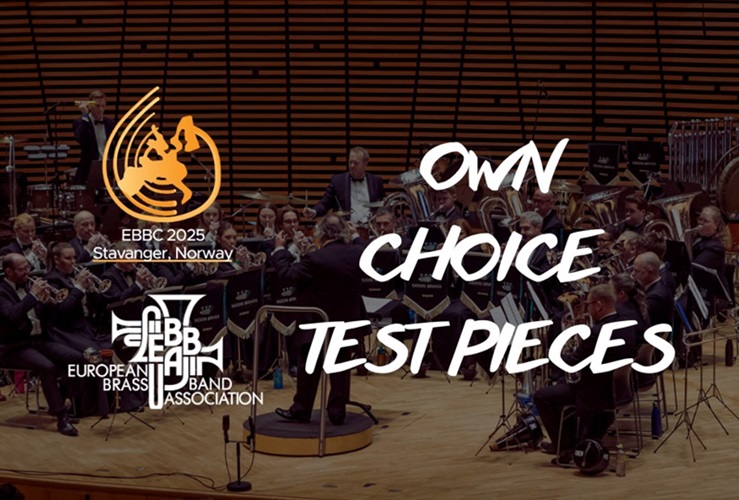
It perhaps tells us a great deal about the world that we live in that many of the own-choice test-pieces to be performed this year in Stavanger either reference or are inspired by troubles and strife.
Explorations
Explorations into misinformation and lies, battles secular and sacred, man-made and potential natural disasters, myth and science fiction abound amongst the tributes to compositional giants and philosophical treatise.
We have come a very long way since the first European Championships in London in 1978 when competing bands were asked to perform music that reflected the cultural as well as musical identity of their nation…
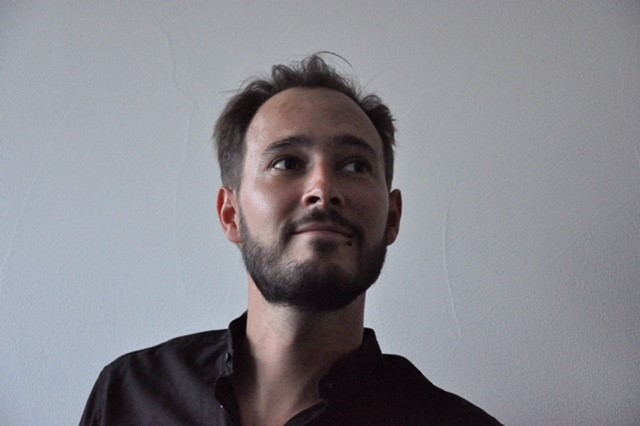
***** Concerto No 10 for Brass Band and Ondes Martenot (Ludovic Neurohr)
The stars of Ludovic Neurohr's composition signify the five linked movements that deliberately set out his free-thinking emotions — aided by the ethereal sound of the Ondes Martenot.
There is no mathematical structuring of the music, no traditionally balanced harmonies or specific orchestration — just an alchemy of thought and freedom projected onto a blank 18-minute canvas.
The work is subtitled, 'No word to give emotion' for a singular reason.
The work is subtitled, 'No word to give emotion' for a singular reason.
Each star represents a defined section of his liberal approach — the first a prelude that bubbles like volcanic magma, followed by the second, a much colder, 'Immersion', which deliberately sets out to provide a 'bewitching nectar' to get under the skin of the listener.
The third, 'Sharing' connects the preceding sections led by a lyrical soprano that aims to possess 'bright and sparkling' intensity.
The fourth evokes a sense of heavenly reflection led by the sound of the ondes martenot (an instrument famously used by the renowned French composer Olivier Messiaen) - elegant, restrained and finessed to a point that lingers above the band. It projects from a very human heart but remains connected to the binary pulse of the electronic mind.
It leads to the finale and the culmination of ideas and ideals; exciting, tingling and intense — the last play of shared moments of a kaleidoscope of emotions, real, perceived, raw, tender or simply imagined.
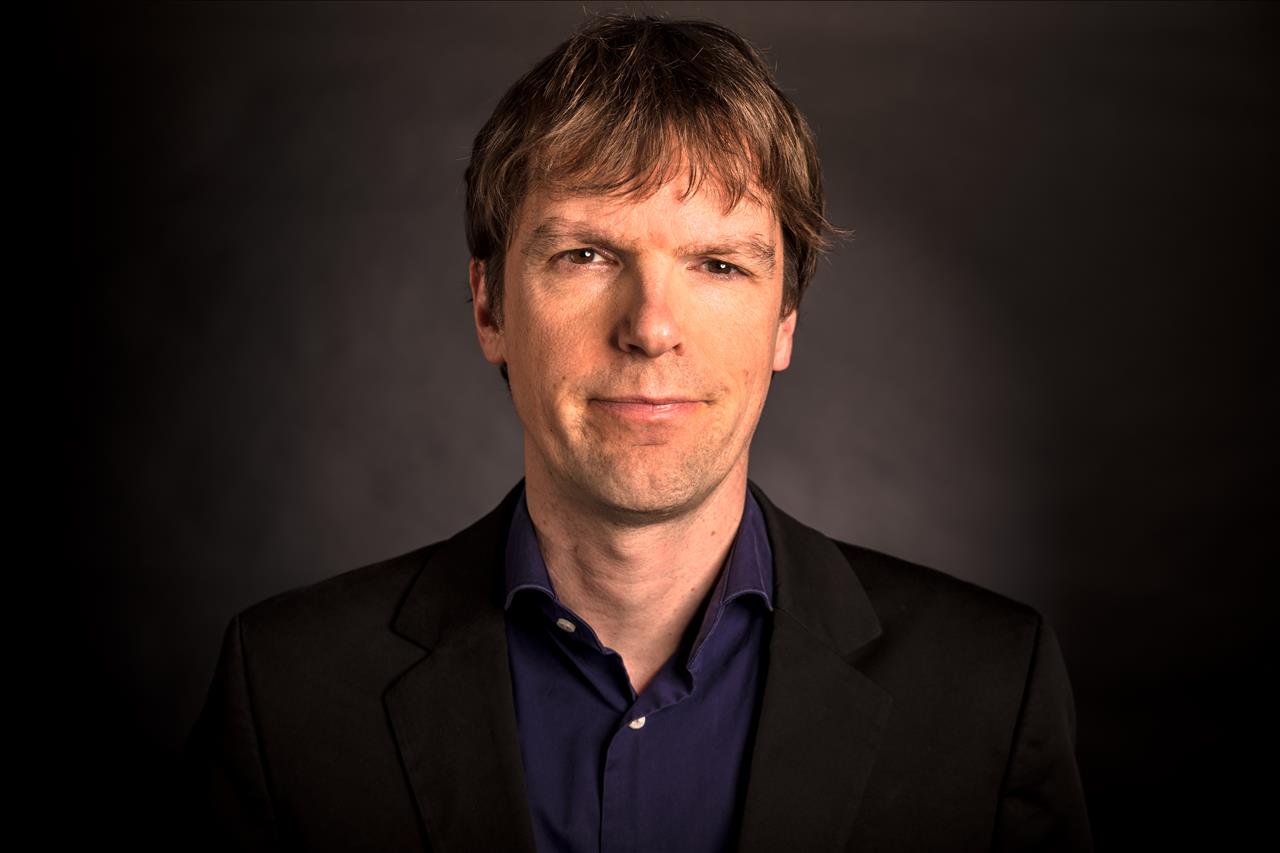
A Gabrieli Fantasy (Bert Appermont)
‘A Gabrieli Fantasy’ is an extended exploration of an original octet written in 1608 by Italian composer Giovani Gabrieli. Belgian composer Bert Appermont has taken this and developed it through the spatial use of five linked elements based on a triple chorus band structure.
These are both separate and co-joined – the central group positioned to act as a musical echo chamber to the ensembles flanking it on each side.
Different kinds of devices are used – from letting the triptych play in different sections in quick succession, to echoes of melodies, motifs and cell chords. These are extended, distorted, expanded or simply adapted in various contrapuntal or canonic variants.
Different kinds of devices are used – from letting the triptych play in different sections in quick succession, to echoes of melodies, motifs and cell chords. These are extended, distorted, expanded or simply adapted in various contrapuntal or canonic variants.
Part 1 ‘Canzon’ comes from the original ornate octet melody and quickly adapts into virtuosic passages leading to a ‘Toccata’. The ‘Chorale’ that follows creates dissonant mystery based on four tones of the original Canzon, whilst a following ‘Scherzo’ adapts the thematic cells but in a completely new identity – including a sarcastic canon between the three groups.
The finale returns the music to its glorious theme – hammering motifs and virtuosic scalic passages adding to the ornate colourings of neo-baroque inspiration.
The prestissimo coda ending simply adds all the elements together for a glorious climax.
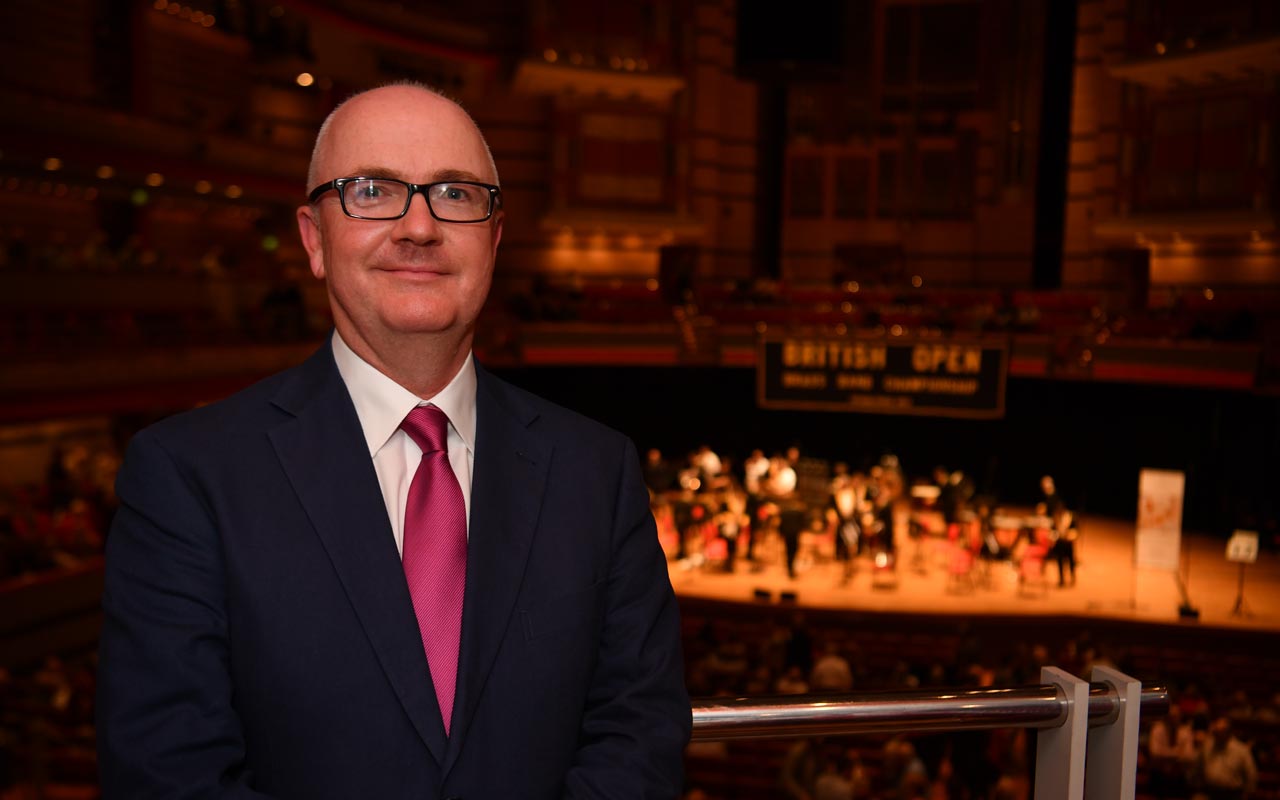
Angels and Demons (Peter Graham)
Peter Graham’s ‘Angels & Demons’ was written in 2015 and takes its inspiration from a passage written in the Book of Revelation in The Bible:
And there was war in heaven: Michael and his angels fought against the dragon...
These two lines of text provide the composer with the material for a series of sound pictures describing a spiritual battle beyond earthly realms. Michael is often depicted in the Bible as an archangel - a chief angelic warrior: The Dragon is of course Satan.
It is therefore a work written on a broad, colourful, filmatic canvas; sweeping in elements of drama and excitement balanced against pathos and reflection – a battle of symbolic will powers and ideologies.
However, the composer clearly states that the composition does not come with any underlying pretext to an acceptance of the source material by either the performers or audience, but instead, for it to be approached with an open mind of interpretation.
It is therefore a work written on a broad, colourful, filmatic canvas; sweeping in elements of drama and excitement balanced against pathos and reflection – a battle of symbolic will powers and ideologies.
These elements are clearly marked; one optimistic, brave and loving, the other, darkened, tainted and chaotic in nature – the balance between the two veering between the polar opposites as the work progresses.
The linear development draws the listener to its climax through each of the sound picture sections of ensemble and solo challenges – the end seeing the triumph of good over the darker forces of evil.
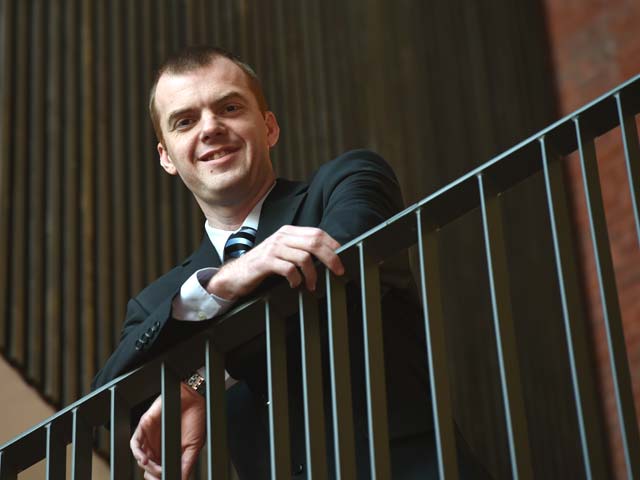
Fraternity (Thierry Deleruyelle)
Thierry Deleruyelle’s work was commissioned as the set-test for the 2016 European Championships in Lille and reflects on the tragic circumstances of a mining disaster in Douai in France in 1906 that claimed over 1,000 lives.
Written in an open, tonal fashion of interlinked movements, the composer draws a clearly defined narrative led line. This balances high-energy injections of volume and speed with more considered pacing and texture, subtly scored balances and lengthened lyrical lines.
These recall the tragedy and its aftermath in seven linked sections; from the early morning mists of the ‘Black Land’ and ‘Towering Colliery’ above ground, to the journey to the face to extract the coal.
With nods of Gallic appreciation to the music of composer Paul Dukas and literary drama of writer Emile Zola, the work speaks of the communal brotherhood of labour deep beneath the ground – hard, mechanical and dangerous in its bleak surroundings.
With nods of Gallic appreciation to the music of composer Paul Dukas and literary drama of writer Emile Zola, the work speaks of the communal brotherhood of labour deep beneath the ground – hard, mechanical and dangerous in its bleak surroundings.
The catastrophe is ignited by a fractured, frenzied forcefulness, the prelude to which is the ghostly on-rush of air through instruments; life or death a matter of luck amid the subterranean chaos.
What is left is the solemn task of bringing out the dead, framed in a bleak paean of reflection, before the piece ends in uplifting fashion in the form of a 'Fraternity Prayer' in which a community pays tribute to those lost.
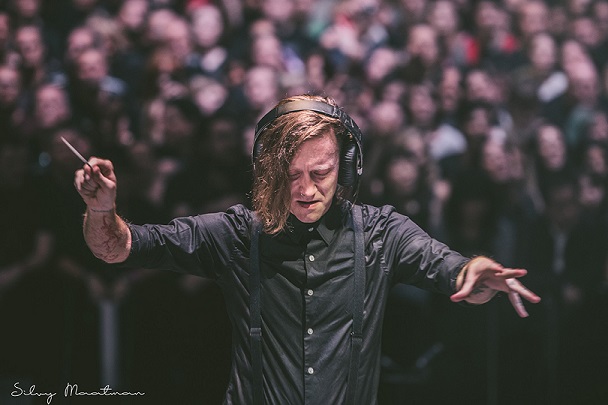
Jesus in Tibet (Simon Dobson)
Simon's Dobson's work references the supposition that Jesus Christ may have spent most of his adolescent and adult life not in Judea, but much further afield.
It’s noted there is no direct Biblical reference of him from the ages of 12 to 30 — a singular omission that could be explained by travels in search of the purity of eastern philosophy.
Mention is made in the Gospel of St. Issa (Issa the Arabic name of Jesus) found in a monastery in the Himalayas. It tells of a prophet devoting himself to Buddhist teachings in Tibet for many years — and perhaps even for the rest of his life.
It’s noted there is no direct Biblical reference of him from the ages of 12 to 30 — a singular omission that could be explained by travels in search of the purity of eastern philosophy.
The composer explores the possibilities in five linked movements – the first of which 'Three Kings from The East' not only witnesses his birth but prophesizes his calling towards the orient.
'Songs of the Second Temple' takes place before the destruction of Herod's second temple, and the sounds of the ancient Shofar horns that were said to accompany it. 'The Silk Road' which follows describes his travels east along the historic trading route, whilst 'St. Issa' marks his final arrival and devotion to a peaceful, serene meditation.
'Nirvana or Retribution' sees Jesus's return to his homeland and his Biblical destiny — although the music leaves an open question to whether that is indeed what happened with a very modern twist of Led Zeppelinesque ‘Kashmir’ flavouring.
It also leaves the possibility, and the understanding of what that might have entailed in the mind of the listener amid a triumphant close.

Metropolis 1927 (Peter Graham)
Fritz Lang's 1927 science fiction film epic ‘Metropolis’ is considered to be a masterpiece of cinematic vision.
Set in a future dystopian world, it highlights the lives of two contrasting communities living in vast city landscapes. Those above ground live a life of privilege and pleasure serviced by the underground drone workers whose role is to maintain and operate the banks of machines which provide the city's power.
Although Lang's film can be considered a type of 20th century morality play with its famous female 'Maschinenmensch' robot, it has also been seen as a Marxist/Leninist critique of the corrosive underbelly of the inter-war German Weimer Republic.
Although Lang's film can be considered a type of 20th century morality play with its famous female 'Maschinenmensch' robot, it has also been seen as a Marxist/Leninist critique of the corrosive underbelly of the inter-war German Weimer Republic.
Peter Graham’s work doesn’t attempt to précis the film’s plot, such as it was, nor promote the message of the original.
However, it does reflect the composer’s appreciation of Lang's noirish visual style and set designs - from the brooding machine rooms, decadent nightclubs and gothic cathedral to the paradoxically beautiful creations such as the famous and highly idealised female robot.
‘Metropolis 1927’ is a deliberately theatrical and virtuosic take on that inspiration, with its slightly acidic, dark tonality and clever snapshot imagery - from air-raid sirens to Dixie jazz combo leading the listener through the urban landscape to what is hoped, is a triumphant conclusion of lasting happiness.
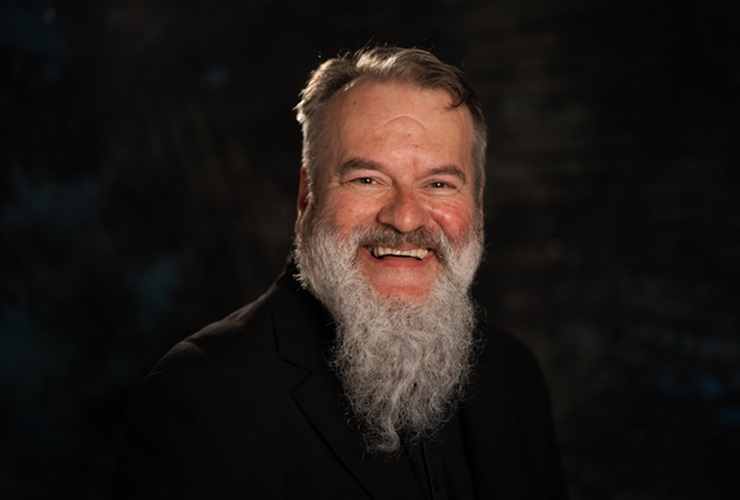
Myth Forest (Hestefallstjonn) (Stig Nordhagen)
According to Friedrich Nietzsche - "When you look into the abyss, the abyss also looks into you."
Stig Nordhagen's highly evocative ensemble work, written as the set-test for the European Championships held in Oslo in 2013 certainly does that – and more.
Inspired by the unworldly mystery of a Stygian-like frozen lake near to his home, called Hestefallstjenn, it’s a crepuscular Nordic journey to the margins of a gloomy, malodorous body of water, menacing in sulphurous intent.
It is a mysterious sentinel offering little solace to the feelings that also permeate the conscious and subconscious mind when standing on its edge, peering into the dark, tar like waters that seem to have no end.
Within it stands the corpse of a frozen, putrefied dead horse. It is a mysterious sentinel offering little solace to the feelings that also permeate the conscious and subconscious mind when standing on its edge, peering into the dark, tar like waters that seem to have no end.
However, there is also something tender and beautiful about how nature gives as well as takes - the watery grave surrounded by layers of textured soil, soft beneath your feet and the delicacy of tiny insects that flirt and dance in the cold air around your face.
The longer you linger though the icy expressions are laced with impending fears of personal mortality.
It's as if you are being drawn, like that poor beast, inexorably towards a chilling death - your last breath freezing before your eyes as you slowly sink below the surface.
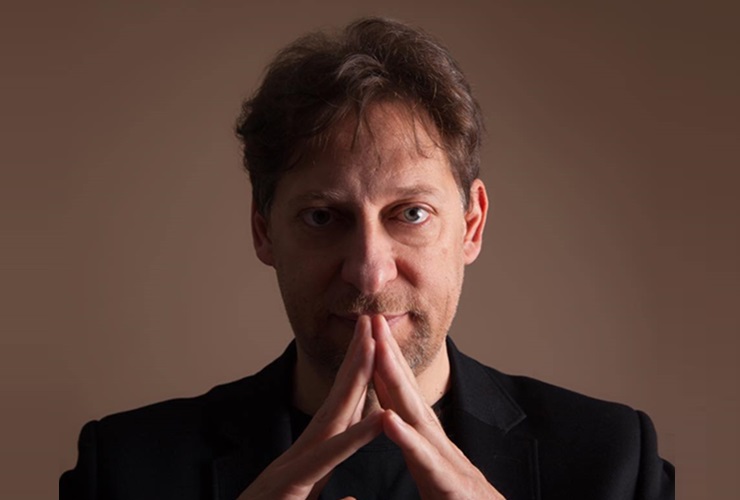
Remembrance (Thomas Doss)
Thomas Doss has written extensively for the brass band medium with a number of his compositions performed at the European Championships.
His latest work, which is given its world premiere here, retains his fascination to classical source material. In this case it is to Anton Bruckner's piano piece ‘Erinnerung’ – meaning ‘remembrance’. The original score in A Flat major was first published in Vienna in 1900 and has subsequently been transcribed for solo flute, harp and viola.
Bruckner composed around 50 small piano works - ‘Erinnerung’ one of the last in 1868. Written between his first and second symphonies its simple grandeur has a nostalgic sense of romance in that he never revealed who or what was the object of his remembrance.
Doss maintains that enigmatic feel – the connection made beyond the grave to the spirit of Bruckner, who as the composer states, “seems to want to actively intervene from the other side and try to accompany the brass band with his organ playing – and which he seems to succeed to do every now and then.”
Doss maintains that enigmatic feel – the connection made beyond the grave to the spirit of Bruckner, who as the composer states, “seems to want to actively intervene from the other side and try to accompany the brass band with his organ playing – and which he seems to succeed to do every now and then.”
The works starts in a mood of unworldly nostalgia, developing with increasing intensity through a series of cadenzas.
Doss/Bruckner then collide almost in a battle of wills, evoking romantic drama as well as acidic wit (Bruckner is referred to as ‘Toni B’ at one point).
Pathos, wildness, grandeur and reflection are embraced until the grand old man almost makes an entrance from beyond the veil with his organ blaring - ‘like a filmatic THX sound effect’ as it says on the score, to a last chord that is deliberately set ‘to hang in there as long as possible!’

Sinfonietta No 4 – Adhyatmika Svatantrata (Pierre-Antoine Savoyat)
Pierre-Antoine Savoyat’s work for brass band and Ondes Martenot presents a singular message: Whether it is better not to oppose different religions, but rather to embrace a form of personal spirituality.
The composer argues that it is more beautiful to see humanity believe in itself rather than succumb to the more arcane elements of religious institutions. In doing so he evokes the teachings of tolerance and benevolence but set against episodes of violence and submission that religious intolerance can bring.
The title comes from Sanskrit: evoking spirituality and transcendence, freedom and emancipation, the road to which is explored in six interlinked movements.
The title comes from Sanskrit: evoking spirituality and transcendence, freedom and emancipation, the road to which is explored in six interlinked movements.
‘The Cruel Word’ of totalitarianism is balanced by ‘The Pure Soul’ of goodness, whilst ‘Satan in the Church’ is counterbalanced by ‘Birds of Redemption’. This leads to an ‘Ode to Love and Peace’ and a finale entitled ‘Joy of the Stars and the Angels’.
Savoyat also pays homage to the renowned French composer Olivier Messiaen with the inclusion of an Ondes Martenot (the electronic instrument used on his iconic 'Turangalila Symphony').
It is heard in the central ‘Birds of Redemption’ section – and which sees Savoyat transcribe the sound of six different bird species from all over the world – including a humble blackbird that has lived in his garden for over a year.
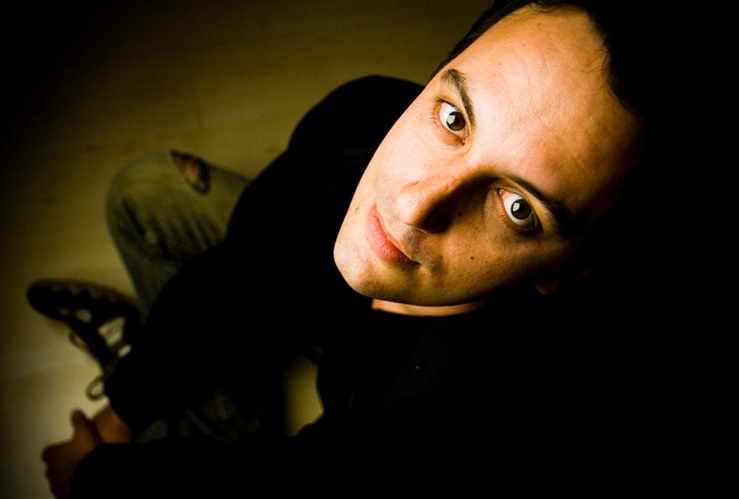
The Forest for the Trees (Wim Bex)
The use of propaganda in times of conflict is both a manipulative and effective tool of political communication.
It was first used in the Ancient World, whilst in modern times it has followed a darker path through disinformation to steer public opinion. What is falsehood for one side is taken as the truth by the other – the result leading to distrust and polarisation.
The title is linked to the argument made by Sir Thomas More in 1533 against the English cleric Robert Barnes, who he thought was a heretic. More stated that although Barnes could actually touch the bricks that built St Paul’s Church of Rome, he was still blind to the importance of the building itself.
More stated that although Barnes could actually touch the bricks that built St Paul’s Church of Rome, he was still blind to the importance of the building itself.
Belgium composer Wim Bex explores these issues framed within a symphonic tone poem structure.
It is made up of 9 subtitled, interlinked sections that asks the listener to search for the unbiased ‘middle ground’ to distinguish between what is real and what is fabricated.
From the opening ‘All peace and quiet’ he leads a narrative line that embraces ‘Preparing the set-up’; ‘Divide and conquer’; ‘Something smells fishy..’; ‘Collateral damage’; ‘Which side are you on?’; ‘Exposure or exposed’ and ‘History repeats itself’, before closing with the questioning coda of ‘Unless…’
The music is based on five different themes – one of which acts as the false ‘propaganda’ that weaves its way throughout the work.
The truth finally emerges as more and more players see the forest from the trees and the bigger picture is revealed – although the composer still asks, if even by then does the actual truth exist at all?

The Legend of King Arthur (Dr Peter Meechan)
King Arthur is the subject of many stories and myths – from him pulling the Excalibur sword from the stone and his courageous battles with his fellow Knights of the Round Table, to his ultimately tragic love for Guinevere.
Peter Meechan’s work is a musical portrayal of some of the most well-known moments of the legend – a deliberate rock inspired overture that is linked in more modern times to Arthur’s alleged final resting place near Glastonbury.
A thrilling opening soon gives way to the mysterious arrival of Merlin who places Excalibur in a stone with the promise that: “Who so pulleth out this sword of this stone is the rightwise born king of all England”.
A thrilling opening soon gives way to the mysterious arrival of Merlin who places Excalibur in a stone with the promise that: “Who so pulleth out this sword of this stone is the rightwise born king of all England”.
Many try but to no avail, but with the reiteration of his motif theme and a theatrical flourish we hear (and may well see) Arthur succeed to fulfil his destiny.
Hailed and loved, he rules his kingdom and enjoys his greatest military victory over the Saxon invaders at ‘The Battle of Mount Badon’ which brings an extended period of peace.
However, the penultimate section of the work tells of his tragic love for Guinevere – his traitorous wife, who through her infidelity with Sir Lancelot ultimately leads Arthur to his final battle and death at the hands of his nephew, Mordred.
Mortally wounded we hear a sudden and dramatic re-sounding of Arthur’s theme to close as he is taken to Avalon to pass into legend.
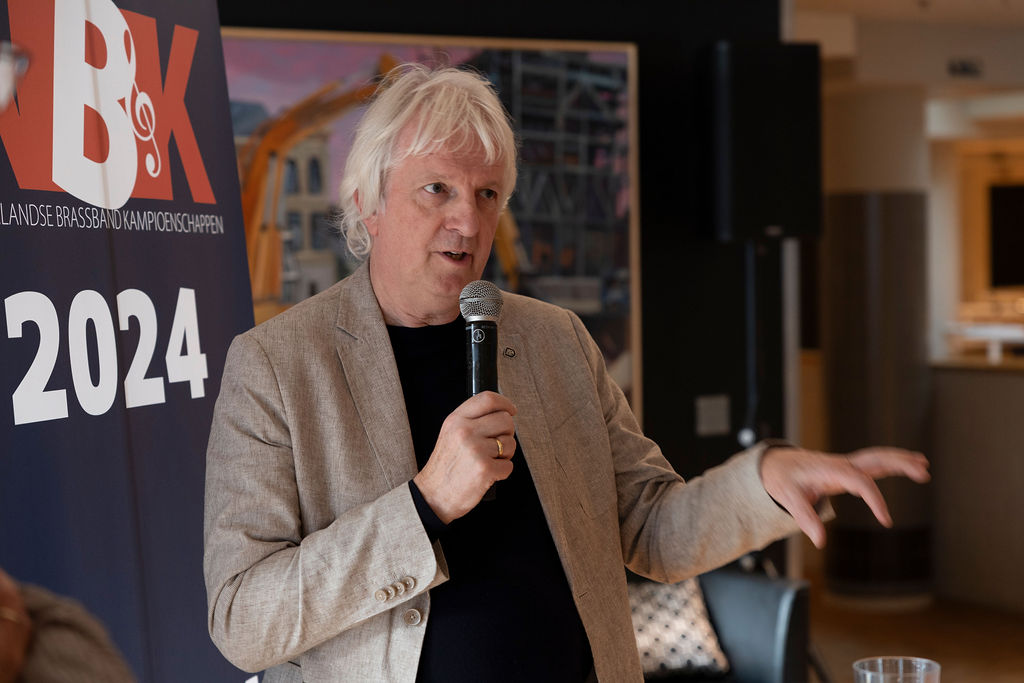
The Lost Circle (Jan Van Der Roost)
Jan Van der Roost’s ‘The Lost Circle’ is a composition that challenges both preconceptions as well as misconceptions about Stonehenge, the prehistoric megalithic structure found on Salisbury Plain in the UK.
Man’s millennials-long link to the monument still retains a sense of unresolved mystery, even though science has managed to tell us when and how it was made. It is the why that remains the real enigma.
The composer accentuates the questioning – the work a construct of either literal or figurative meaning even though it follows a straightforward narrative line of 12 clearly marked stanchion points over its duration.
It opens in West Wales and the mystery of ‘Waun Mawn… a very long time ago…’, -the ’Lost Circle’ itself a free form origin motif heard on the vibraphone, and which heralds the movement of the huge blue stones across boggy land and rocky outcrops.
It opens in West Wales and the mystery of ‘Waun Mawn… a very long time ago…’, -the ’Lost Circle’ itself a free form origin motif heard on the vibraphone, and which heralds the movement of the huge blue stones across boggy land and rocky outcrops.
The challenges and obstacles are then imposed by the score – differing colours and textures, technical hurdles for the ensemble and solo lines with both subtle and more aggressive calibrations of dynamic and tempo.
The spiritual element that the circle represents is marked by a burial hymn of celebration before the stones reach the pastoral beauty of Salisbury Plain.
There, with reserves of energy tested, a final procession is marked by the leadership of the bass trombone in drawing the music forward in anticipation.
The final sections see the monument erected – the huge stones somehow lifted into place and sunk into the ground for millennia to follow – with according to the composer, ‘The Lost Circle at its final destination!’.

This World (Thomas Doss)
Thomas Doss is well known for seeking inspiration for many of his brass band works from classical music sources, yet for this composition he draws on his own feelings to reflect on ‘This World’ on which we live.
It is one he says where we “love, laugh, mourn, cry and fear. On which we beget, give birth, kill and destroy.”
As a singular viewpoint it seems that individual actions can do little to alter, yet seen from the infinite vastness of space it gives a very different perspective. And it is from that focus point that he encourages the listener “just to see this world from outside…”
The work reflects on current events - from the conflicts in Ukraine and the Middle East to the destruction of the environment and the politics of populism that do so much to drag a singular species apart.
Much like the view afforded the American Apollo astronauts, the tiny speck of blue and green was an oasis of beauty and optimism – the ‘Good Earth’ as famously called by the Apollo 8 astronaut Jim Lovell, and “a rotating globe of the hopefulness of life” according to Thomas Doss.
The work reflects on current events - from the conflicts in Ukraine and the Middle East to the destruction of the environment and the politics of populism that do so much to drag a singular species apart.
This provides the composition’s emotive core – earthly troubles caught in heavenly serenity, technical advancement and daring set again lyrical reflections and contentment. All arise from the pages of his score – from ensemble virtuosity to solo line beauty.
The music, written in one continuous arc, asks these demanding questions of the players in their efforts to offer performance resolutions – the listener simply asked to keep an open mind to the outcome they wish for themselves.
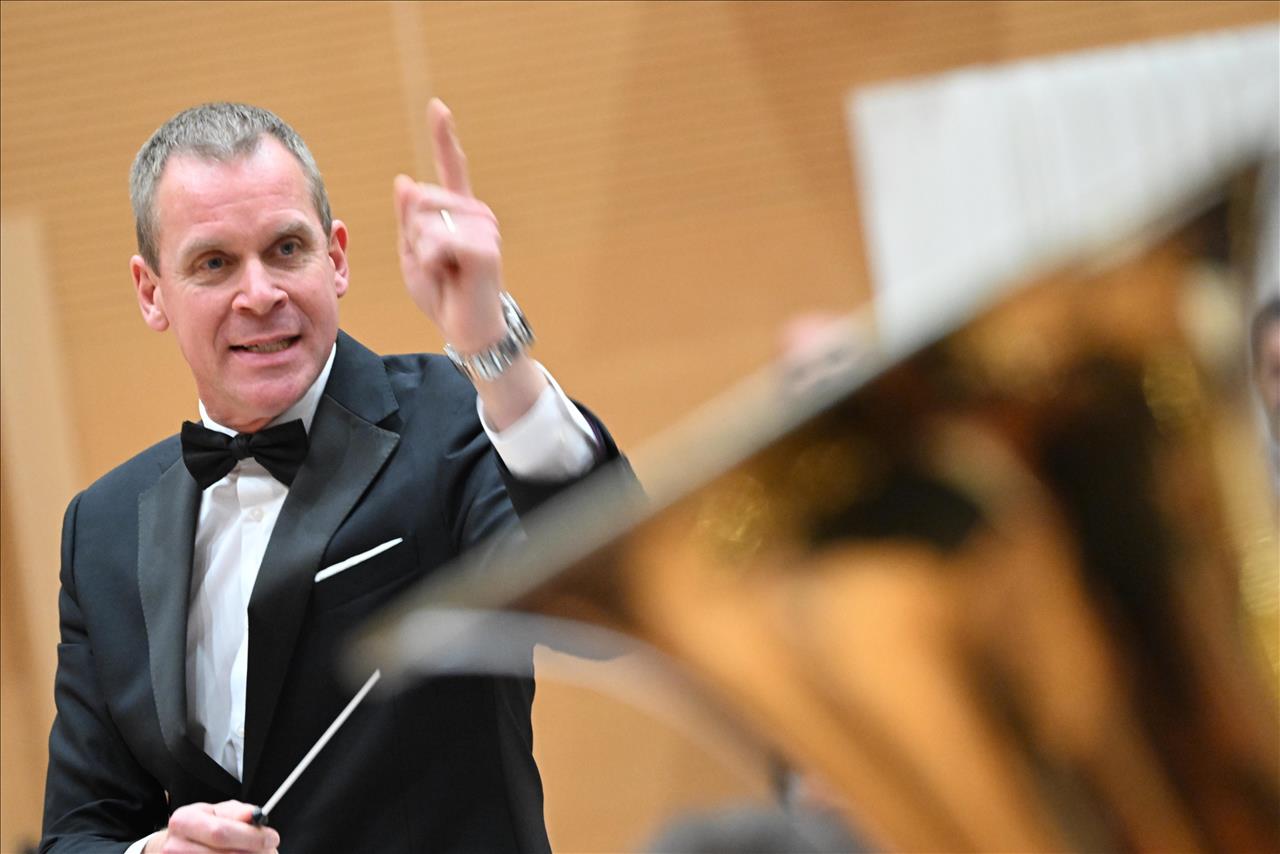
Two Worlds (Philip Harper)
‘Two Worlds’ is aligned to the observation from Israeli historian and author Yuval Noah Harari that “Power is making a lot of people believe the same story”.
Philip Harper explores this concept through a scenario described as “pure make believe” – although one underpinned by his own observation that “at key moments, certain people have been able to tell stories so convincing that they can literally change the course of history”.
It sees Egyptian Pharaoh Tutankhamun meet American President Abraham Lincoln. Despite the difference of 3,000 years, they discuss stories which were important in their two worlds – some of which are markedly different, others very much the same.
It sees Egyptian Pharaoh Tutankhamun meet American President Abraham Lincoln. Despite the difference of 3,000 years, they discuss stories which were important in their two worlds – some of which are markedly different, others very much the same.
The narrative is drawn into four interlinked sections: The first, ‘Dawn – 3,500 years ago’ is set in Egypt and evokes the beliefs in Gods who ruled personal fates. The second, ‘War – 250 years ago’ – sees the perverse interpretation of American constitutional equality, and the terrible mistreatment that arose towards indigenous peoples, through slavery and the denial of female emancipation.
‘Dialogue’ explores the fantastical conversations between the figures of Tutankhamun – represented by the flugel horn, and Lincoln - represented by the trombone; solo and fugue in construct and argument, audacious and imaginative in approach, before an assassin’s bullet brings it all to an end.
The final section ‘Monuments’ emerges from a period of ‘Desolation’ – hope and belief return as humanity recognises the positivity of storytelling in shaping the world in which we live.
Challenge Section:
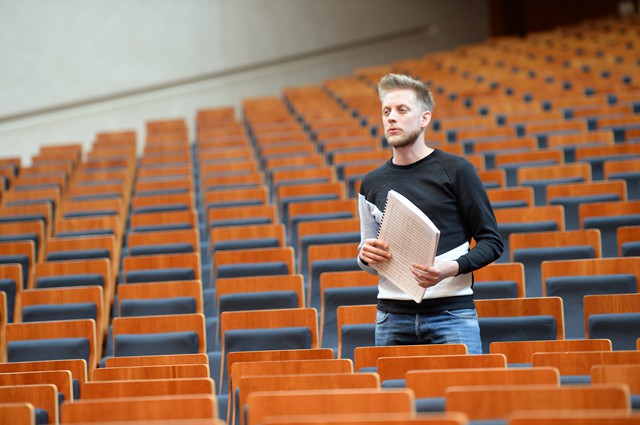
A King’s Lie (Stan Nieuwenhuis)
Belgian composer Stan Nieuwenhuis has gained wide ranging critical acclaim for his compositions – not only for the brass band medium, but also for wind bands, electronic soundtracks, project installations and pop songs with his indie band called ‘Mastercab’.
‘A King’s Lie’ is one of his early test-piece works – written in 2012 and used extensively at events around the world ever since – from the UK to New Zealand.
What follows is a familiar tale of unrequited love, a faked death, a lying King, emerging truth, a crusade to find a lost love, a battle, a please for mercy and a happy ever ending climax all cleverly packed into three consecutive movements.
As the title implies, it takes its inspiration from a great big regal fib that gets out of hand – in this case about the pairing of Floris, the King of Spain’s heir, and his childhood sweetheart, Blancheflour. However, he is rich and titled, she is poor and orphaned.
What follows is a familiar tale of unrequited love, a faked death, a lying King, emerging truth, a crusade to find a lost love, a battle, a please for mercy and a happy ever ending climax all cleverly packed into three consecutive movements.
The first sets the scene of young love, inseparable and optimistic in a court of great beauty and ornate pleasures. The second charts the separation and the building of the lie that underpins it. The voices of the young lovers are set to the flugel and euphonium, the climax seeing Floris take the decision to return home where he is given the tragic, if ultimately, false, news by his father.
After he confesses to his terrible lie, the finale is an exciting, colourful romp that sees Floris find his love, battle her captors, free her and live happily ever after.
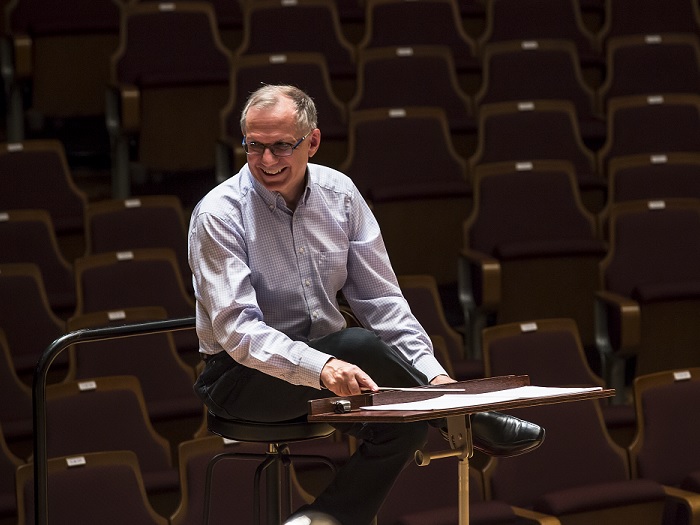
Tallis Variations (Philip Sparke)
‘Tallis Variations’ was originally commissioned the 2000 European Championships held in Birmingham, and it has since become one of the composer’s most popular contest works.
The hymn tune on which the variations are based is the third of nine that Thomas Tallis wrote in 1567 as part of a psalter for the first Anglican Archbishop of Canterbury, Matthew Parker. Vaughan Williams famously used it as the basis of his ‘Fantasia’ many years later.
The hymn tune on which the variations are based is the third of nine that Thomas Tallis wrote in 1567 as part of a psalter for the first Anglican Archbishop of Canterbury, Matthew Parker.
After the turbulent opening the first half of the theme is stated by the middle of the band. 'Variation 1' is based on the first two notes of the theme in the E minor tonality, whilst 'Variation 2' contains a gentle flugel solo and a varied statement of the theme in chorale form.
'Variation 3' starts with a series of short solos before a serene cornet melody appears before the final variation arrives in ebullient mode - starting with cornet fanfares and evolving around a fugue-ike theme first heard by the euphoniums.
Eventually the music from the first variation returns to herald the final statement before the music subsides and ends peacefully in the beauty of the Tallis chorale again.
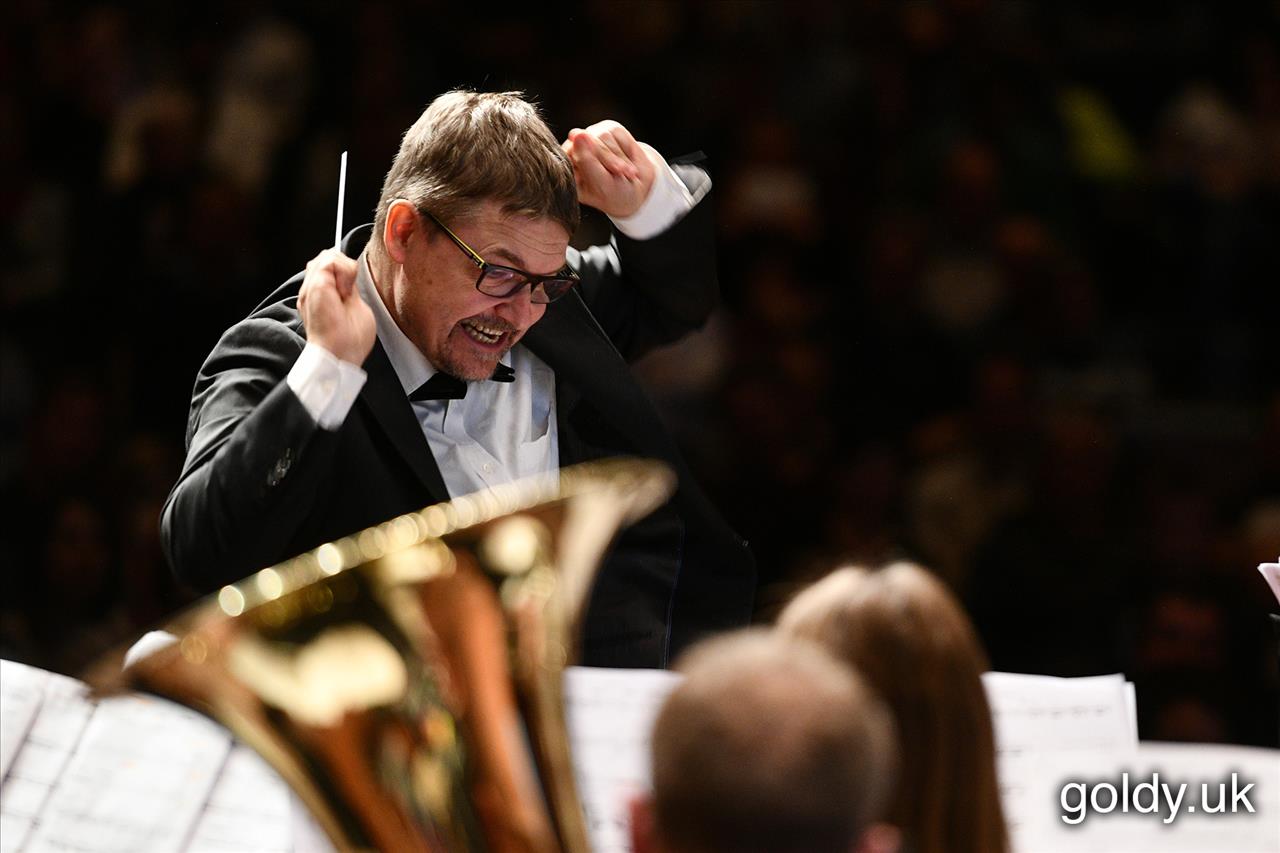
The Impermanence of The Flow (Yvan Lagger)
Yvan Lagger was born in Valais in Switzerland and has been involved in brass bands all his life as a player, teacher, conductor and composer.
He has enjoyed considerable success in all areas and in recent years has enjoyed critical acclaim for his compositions for soloists, ensembles and bands.
The work references the philosophical problems of change and transience, which are to be found in various religions and philosophies – first appearing in the writings of Heraclitus, but also included in Hinduism, Buddhism and modern Western texts.
‘The Impermanence of The Flow’ was written in 204 and premiered at the Swiss National Championships later that year. It is dedicated to his mother and father, Charlotte and Daniel as well as Marcel Carthoblaz, Jean Lagger, Rene Carthoblaz, Daniel Locher and the musicians of Brass Band La Liberty Salins for 30 years of work and trust.
The work references the philosophical problems of change and transience, which are to be found in various religions and philosophies – first appearing in the writings of Heraclitus, but also included in Hinduism, Buddhism and modern Western texts.
There is no narrative inspiration that leads through the score – the work a singular arc of exploration from an energised opening. Styles, pacing and dynamic contrast follow from the ensemble and soloists as the music flows with uninterrupted intentions to its final, furioso destination.








